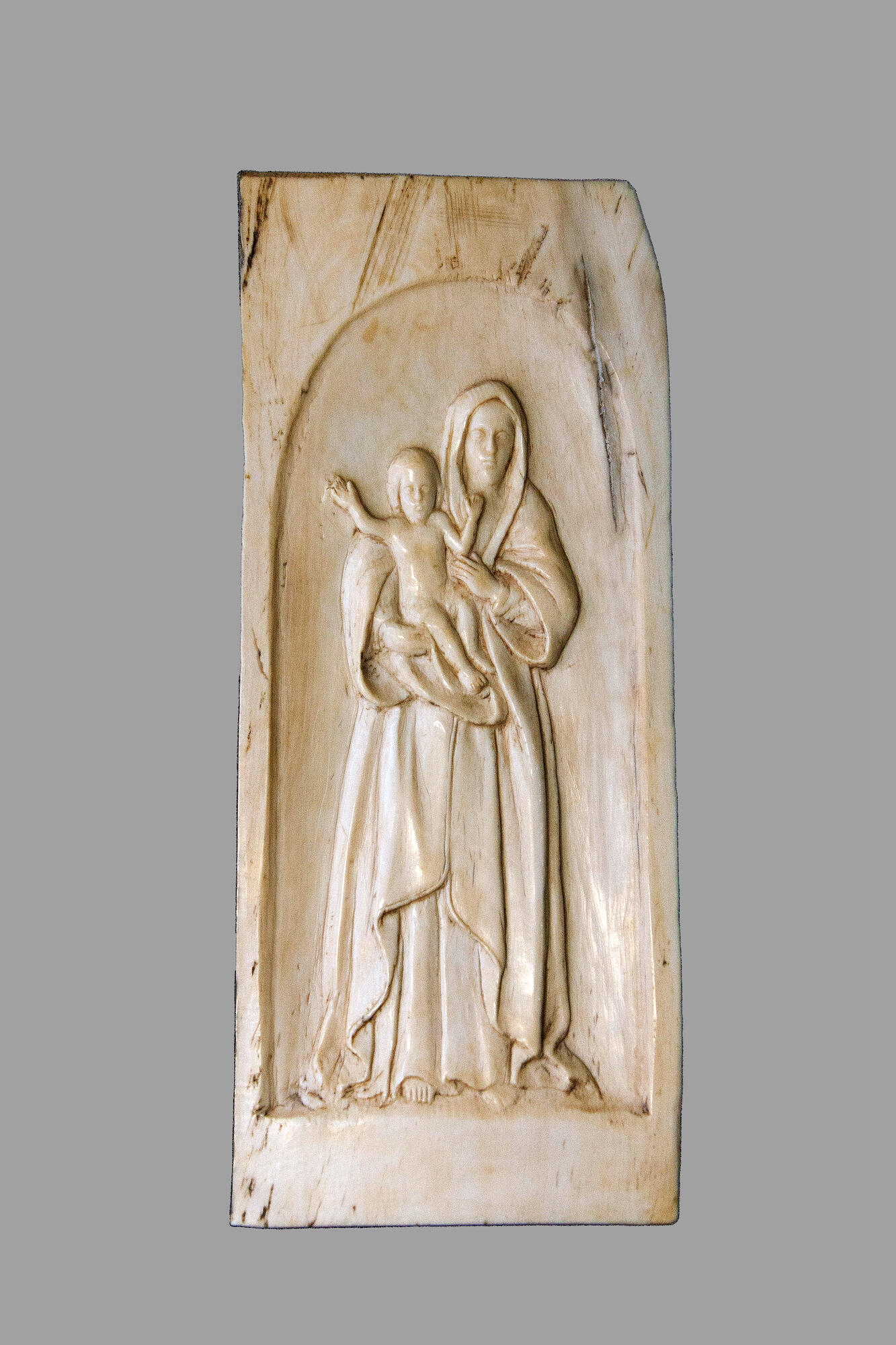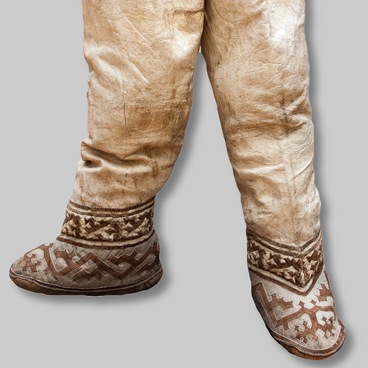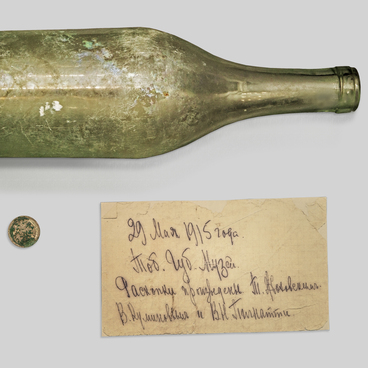The Madonna and Child bas-relief is one of the works done by Polish revolutionary Ignatiy Plyapos, who was exiled to Tobolsk in the 1860s along with other participants in the January Uprising in Poland. The artisan fashioned the image on a thick oval slab of light brown bone. Madonna and the Christ Child are on one side in a simple, recessed arch that has no decorative features. On the reverse side, there is a note in pencil: ‘Plyapos, Pole in exile, mammoth bone engraver’.
Initially, Madonna and Child was stored in the collections at the Tobolsk Museum of Fine Arts. That was opened back in 1920 at the initiative of the Tobolsk artist Panteleymon Chukomin. In the same year, art studios and industrial workshops were set up in Tobolsk that had departments devoted to bone carving. Artisan bone carvers, who became renowned in Russia and at exhibitions held abroad, gave their works of art to the museum that had been created. After the Museum of Fine Arts was shut down, its entire collections were transferred to the Museum of the Tobolsk North, which is now the Tobolsk Historical and Architectural Museum Reserve. Those included the bas-relief that is presented.
Tobolsk is a major center of the bone carving craft in Russia. The first bone carving workshops appeared here at the beginning of the 18th century, when Swedish officers taken prisoner during the Great Northern War were exiled to Siberia. They were involved in various handicrafts in Tobolsk, including lathing bone carvings. At that time, machined snuffboxes were in great demand in the highest circles in Siberia’s capital. And then, in the 1860s, Poles appeared in Tobolsk after they were exiled there.
As it turned out, those included skilled artisans, including bone carvers. To improve their financial situation, and to while away the time in prison in Tobolsk, they were involved in making brooches, snuffboxes, hairpins, paperweights, crucifixes, and images of Madonna. Religious themes were some of the most popular among the Polish artisans. The most famous of the exiled Polish bone carvers were Ignatiy Plyapos and Shafnagel.
The Poles cooperated with the local Tobolsk craftsmen, enriching their traditions with European artistic and technical skills. It was the Poles who taught bone carving to Mikhail Znamenskiy, a famous Tobolsk artist during that time, who was a student of the Decemberists. And he then shared his knowledge, skills, and artistic canons with his compatriots: Fursov, the Filimonov brothers, and Terentyev. For example, together with one of the Filimonov brothers Mikhail Znamenskiy worked a dish made of birch burl, and decorated with openwork ornamentation made of mammoth bone.
Initially, Madonna and Child was stored in the collections at the Tobolsk Museum of Fine Arts. That was opened back in 1920 at the initiative of the Tobolsk artist Panteleymon Chukomin. In the same year, art studios and industrial workshops were set up in Tobolsk that had departments devoted to bone carving. Artisan bone carvers, who became renowned in Russia and at exhibitions held abroad, gave their works of art to the museum that had been created. After the Museum of Fine Arts was shut down, its entire collections were transferred to the Museum of the Tobolsk North, which is now the Tobolsk Historical and Architectural Museum Reserve. Those included the bas-relief that is presented.
Tobolsk is a major center of the bone carving craft in Russia. The first bone carving workshops appeared here at the beginning of the 18th century, when Swedish officers taken prisoner during the Great Northern War were exiled to Siberia. They were involved in various handicrafts in Tobolsk, including lathing bone carvings. At that time, machined snuffboxes were in great demand in the highest circles in Siberia’s capital. And then, in the 1860s, Poles appeared in Tobolsk after they were exiled there.
As it turned out, those included skilled artisans, including bone carvers. To improve their financial situation, and to while away the time in prison in Tobolsk, they were involved in making brooches, snuffboxes, hairpins, paperweights, crucifixes, and images of Madonna. Religious themes were some of the most popular among the Polish artisans. The most famous of the exiled Polish bone carvers were Ignatiy Plyapos and Shafnagel.
The Poles cooperated with the local Tobolsk craftsmen, enriching their traditions with European artistic and technical skills. It was the Poles who taught bone carving to Mikhail Znamenskiy, a famous Tobolsk artist during that time, who was a student of the Decemberists. And he then shared his knowledge, skills, and artistic canons with his compatriots: Fursov, the Filimonov brothers, and Terentyev. For example, together with one of the Filimonov brothers Mikhail Znamenskiy worked a dish made of birch burl, and decorated with openwork ornamentation made of mammoth bone.



